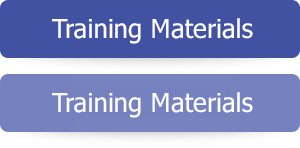Accessibility and Holiday Shopping
Accessibility and holiday shopping
By Rachel Goldstein
The holiday season is upon us… cold weather (luckily not here in Miami), good food, time with family and friends and of course, great shopping and holiday deals at all of our favorite stores. Many retailers this year are even planning to open on Thanksgiving Day instead of starting their deals on Black Friday. With at least 18% of our population with disabilities, more than 50 million Americans, each is a potential customer. Maintaining an accessible retail store allows for full participation, will bring in new customers this holiday season and will keep them coming back.
Title III of the ADA covers businesses that are public accommodations. Public accommodations are private entities that own, lease, lease to, or operate facilities, such as shopping malls and retail stores, which must comply with basic nondiscrimination requirements that prohibit exclusion, segregation, and unequal treatment. The ADA applies to both the built environment and to the actual policies and procedures that affect how a business provides goods and services to its customers.
There are countless practical ways that businesses can promote access with little or no extra cost including the following:
- Make sure accessible parking spaces and accessible routes are clear of barriers including vehicles without proper designation, shopping carts, mud and debris
- Ensure there are clear and readable signs at the main entrance to direct individuals to the accessible entrance and accessible restrooms
- Keep accessible entrances unlocked at all times during business hours
- Plan all routes and displays to ensure that all objects that hang over the aisles like seasonal lightingprovide required head clearance and cane detection for customers who are blind or have low vision
- Assist customers by retrieving items that are out of reach
- Remove obstacles, including shopping carts, boxes, equipment, and promotional and holiday displays so that they do not block or spill over into the accessible routes
- Maintain lifts and elevators and make certain that necessary repairs are up to date
- Make sure that trash cans and all objects are removed from under the elevator call buttons
- Eliminate obstacles such as trash cans, chairs and shelving from fitting rooms
- Ensure that checkout areas are connected to an accessible route and have sufficient clear floor space for a person using a wheelchair
- Keep accessible checkout aisles staffed during business hours
- Keep sales counters clear of merchandise and equipment
- Maintain accessible exits and ensure they remain unobstructed at all times
Equally important to the customer experience and ensuring success this holiday shopping season is staff training. As part of an ongoing training, and especially before the holiday season officially begins, retail stores should make sure that their staff are aware of all policies to promote accessibility and know how to implement them. Staff should be educated to understand the requirements on modifying policies and practices, communicating with and assisting customers, accessible features of the store and the location and purpose of accessible retail components. Retail staff who work on the front line are an integral part in ensuring the stores accessibility features bring the greatest possible return- repeat and satisfied customers.














